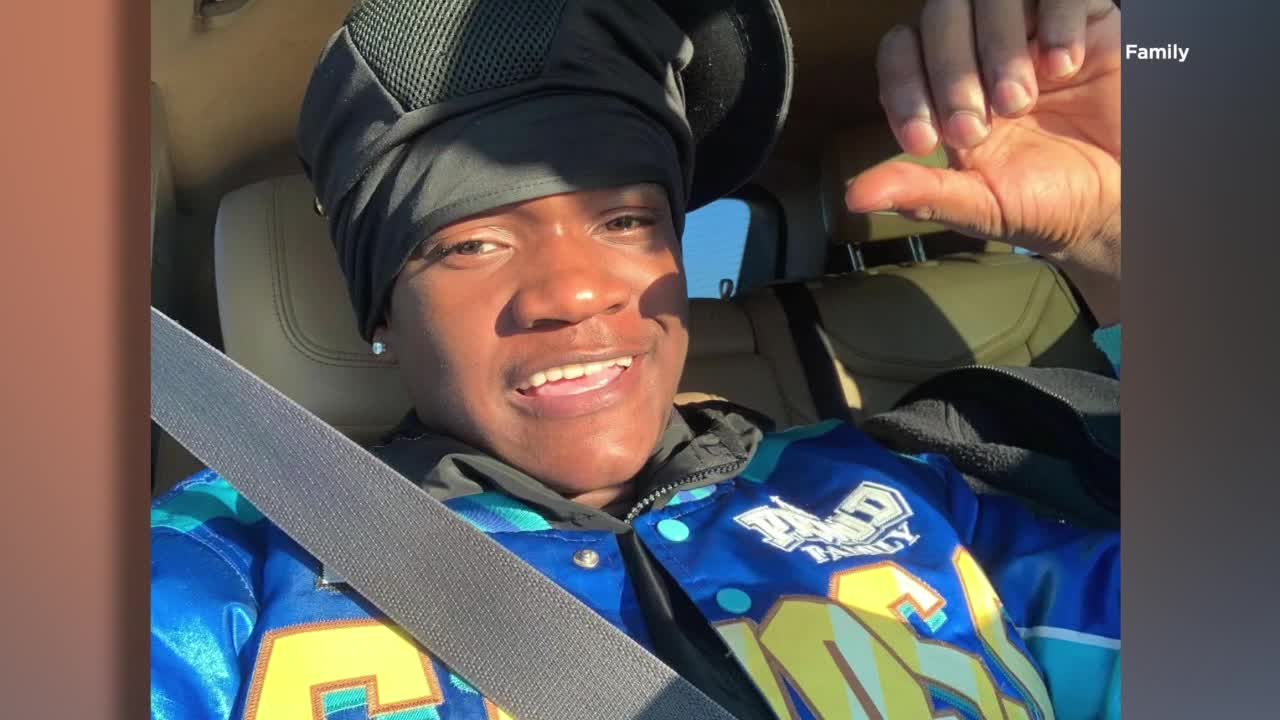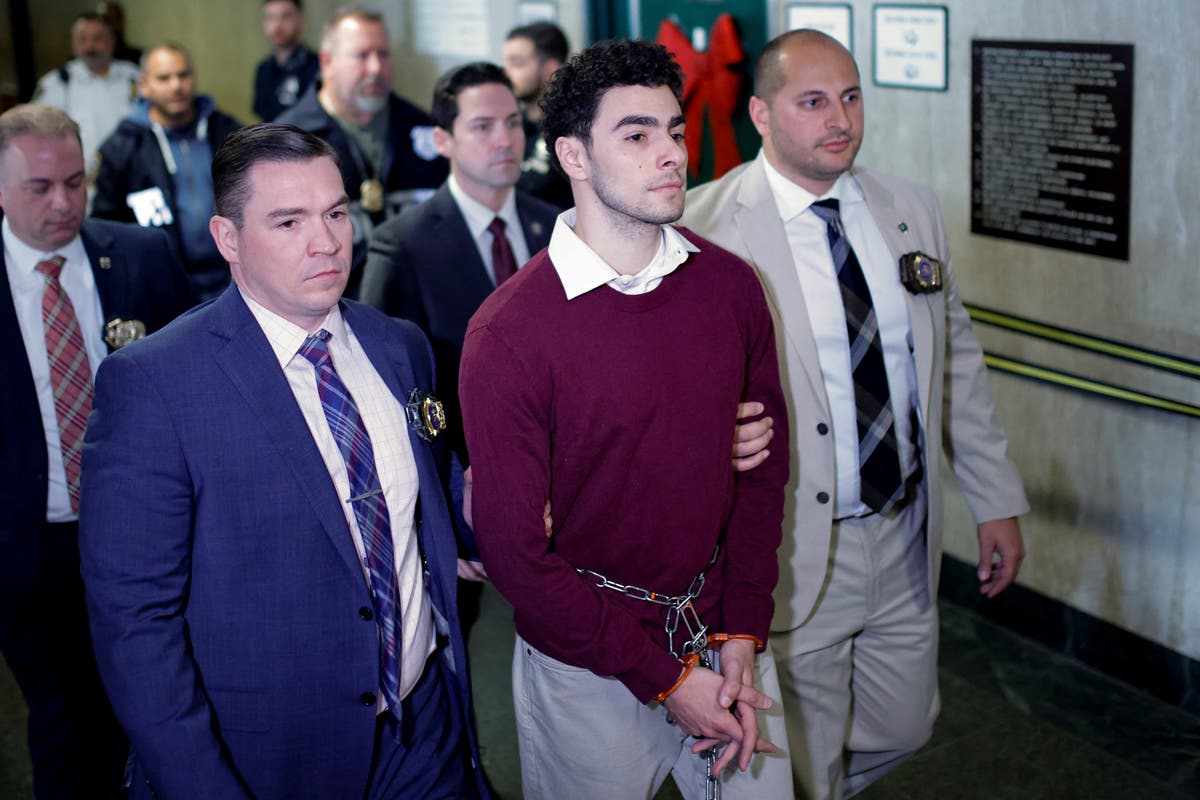World
UN says widespread sexual violence in Sudan is 'deeply alarming' amid bloody civil war

The 18-month civil war in Africa’s third-largest country has left tens of thousands killed and millions of others displaced amid catastrophic famine and raging diseases. The dire crisis in Sudan is currently one of the worst in the world, but as global attention remains focused on the conflict in the Middle East, the African nation is seemingly being forgotten.
Adding to the bleak picture is a new 80-page report from the United Nations Independent International Fact-Finding Mission for Sudan, which sheds light on how militias are preying on women. The fact-finding mission accuses both the Sudanese Armed Forces (SAF) and the army’s former paramilitary allies, the Rapid Support Forces (RSF), of rampant sexual violence.
WORLD FORGETS ‘CATASTROPHIC’ WAR IN SUDAN AS RUSSIA, IRAN, OTHERS REPORTEDLY FEED FIGHTING WITH ARMS
The U.N. report documents the pervasive sexual violence and human rights abuses in Sudan, affecting civilians from ages 8 to 75. It details how Sudanese women and girls are being abducted for sexual slavery, accusing the RSF of being behind the “large majority” of cases. Furthermore, the mission reported credible accounts of men and boys being subject to rape and gang-rape.
Sudanese displaced people gather at the Zam Zam refugee camp outside the town of El-Fashir in the Darfour region of Sudan during a visit by U.N. officials on July 1, 2004. The U.N. humanitarian aid and refugee agencies appealed on Wednesday, Feb. 7, 2024, for $4.1 billion in international support for embattled civilians in Sudan amid signs that some may be dying of starvation after nearly a year of war there between the forces of rival generals. (AP Photo/Karel Prinsloo, File)
The situation has been exacerbated by a severe lack of medical services. The conflict has left most hospitals and clinics destroyed, depriving victims of much-needed medical treatment.
“The sheer scale of sexual violence we have documented in Sudan is staggering,” mission Chair Mohamed Chande Othman said in a statement. Sudan’s state of affairs “is deeply alarming and needs urgent address,” he added.
Human rights groups have also sounded the alarm over the abuses women are suffering. Advocates report that sexual atrocities are prompting women to take their lives – either in response to the brutalities they have endured, or to escape it entirely.
SUDANESE PARAMILITARY CARRIES OUT ETHNIC CLEANSING IN DARFUR, RIGHTS GROUP SAYS
Sudan’s brutal war erupted in April 2023 after a simmering power struggle between the SAF and the powerful paramilitary RSF group exploded into an all-out war. Most recently, intense clashes in east-central Sudan led to the slaying of more than 100 people. The U.N. said that the RSF shot civilians, sexually abused women and girls, and looted properties.

South Sudanese who fled from Sudan sit outside a nutrition clinic at a transit center in Renk, South Sudan, on May 16, 2023. (AP Photo/Sam Mednick, File)
“The people of Sudan are living through a nightmare of violence,” U.N. Secretary-General António Guterres told the Security Council earlier this week. “The suffering is growing by the day, with almost 25 million people now in need of humanitarian assistance,” he emphasized.
As Sudan nears collapse, foreign aid remains insubstantial. Only about half of the U.N.’s $2.7 billion humanitarian appeal for the Northeast African country has been funded. But even as the country faces the world’s worst famine in forty years, it remains forgotten, overshadowed by the Middle East conflict.

World
Creature Commandos Renewed for Season 2 at Max

ad
World
Trump could face renewed ISIS threat in Syria as Turkey goes after US ally

Concerns over a resurgence of the Islamic State in Syria remain heightened following the fall of the Bashar al-Assad regime and an increase in attacks targeting U.S.-aligned Syrian Democratic Forces (SDF).
President-elect Donald Trump may well face another round against the extremist group as the SDF faces a reality in which it may have to divide its focus between ISIS and threats levied at it by Turkey.
The SDF said five of its soldiers were killed Saturday in attacks by Turkish-backed forces in northern Syria, reported Reuters.
Anti-regime fighters stand on the roadside as displaced Syrian Kurds drive vehicles loaded with belongings on the Aleppo-Raqqa highway to flee areas on the outskirts of the northern city of Aleppo which were formerly controlled by the Kurdish-led Syrian Democratic Forces (SDF), after they were seized by Islamist-led rebels on Dec. 2, 2024. (RAMI AL SAYED/AFP via Getty Images)
TRUMP SAYS TURKEY ‘DID AN UNFRIENDLY TAKEOVER’ IN SYRIA AS US-BROKERED CEASE-FIRE APPEARS TO FAIL
The attacks came following an apparent collapse in a cease-fire agreement brokered by the Biden administration as the U.S. and the SDF ramp up efforts to counter ISIS.
National security advisor Jake Sullivan on Sunday told CNN that his “single biggest concern” is the return of ISIS, which was deemed “defeated” in 2019.
“ISIS loves vacuums,” he said in reference to the extremist group’s use of power struggles in places like North Africa to gain footholds. “What we see in Syria right now are areas that are basically ungoverned because of the fall of the Assad regime.
“Our goal is to ensure that we support the SDF — the Kurds — and that we keep ISIS in check,” he added.

Comrades attend the funeral of five fighters of the Kurdish-led Syrian Democratic Forces (SDF) who were killed in Manbij during clashes with Turkish-backed opposition factions earlier this week, in Qamishli in northeastern Syria on Dec. 14, 2024. (DELIL SOULEIMAN/AFP via Getty Images)
The U.S. has long had to balance its campaign against ISIS in Syria — which it is fighting with the help of the Kurdish coalition forces, despite Turkey deeming the SDF as akin to the terrorist network the Kurdistan Workers Party (PKK) — with Washington’s partnership alongside Ankara as a NATO ally.
“The SDF and the Assad regime were the primary opponents of ISIS,” Bill Roggio, senior fellow at the Foundation for Defense of Democracies and founding editor of “The Long War Journal,” told Fox News Digital. “With the former gone and the latter under pressure from Turkish proxies, concerns about the expansion of ISIS are warranted.”
“Turkey wants to destroy the SDF,” Roggio confirmed. “Turkey has the ideal opportunity to destroy the SDF, and it will take advantage of this unique situation. I expect attack[s] against the SDF to increase.”
PRESIDENT-ELECT TRUMP’S SYRIA DILEMMA: INTERVENE OR LET IT TURN INTO TERROR STATE
The Biden administration has already taken steps to ramp up its campaign against ISIS, hitting more than 75 sites in a significant strike earlier this month on known “ISIS leaders, operatives and camps,” U.S. Central Command (CENTCOM) confirmed.

A soldier from the US-led coalition gestures towards schoolchildren during a joint U.S.- Kurdish-led Syrian Democratic Forces (SDF) patrol in the countryside of Qamishli in northeastern Syria Feb. 8, 2024. (Reuters/Orhan Qereman)
The operation coincided with the fall of Damascus on Dec. 8 following a sweeping takeover of Aleppo, Hama and Homs by Hay’at Tahrir al-Sham (HTS), which was aided by the Turkey-backed Syrian National Army (SNA).
In addition, CENTCOM on Thursday killed ISIS leader Abu Yusif aka Mahmud using a precision airstrike in eastern Syria — an area where, according to Syrian news outlets, ISIS has been able to seize weapons depots belonging to the former Syrian military under the Assad regime amid the “chaos.”
SDF forces in an attempt to clamp down on ISIS uprisings captured 18 ISIS terrorists and suspected collaborators on Sunday near the city of Raqqa, which was once an ISIS stronghold, according to ANF News.
The campaign was reportedly done “in cooperation with the international coalition forces,” but CENTCOM has not yet confirmed whether the U.S. was involved.

US forces provide military training to members of the YPG/SDF, which Turkey consider as an extension of PKK in Syria, in the Qamisli district in the Al-Hasakah province, Syria on Aug. 18, 2023. The PKK is designated as a terrorist organization by the United States, Turkiye, and the European Union. (Hedil Amir/Anadolu Agency via Getty Images)
But concern remains high that the SDF could see its operational abilities divided as attacks from the Turkey-backed SNA coalition forces increase — which could spell trouble for the upcoming Trump administration as it looks to prevent another resurgence of ISIS, while balancing U.S. relations with Turkey, which is further expected to exercise outsized influence over the new Syrian government.
“We continue to monitor the situation in Syria,” Brian Hughes, Trump-Vance Transition spokesperson said in response to questions from Fox News Digital. “President Trump is committed to diminishing threats to peace and stability in the Middle East and to protecting Americans here at home.”
World
Gaza’s Kamal Adwan Hospital director pleads for help before it’s ‘too late’

Israel orders emptying of medical facility with nearly 400 civilians inside, including babies who need oxygen and incubators.
The director of one of Gaza’s last partially functioning hospitals is appealing for help, saying Israeli forces have surrounded the medical facility.
Dr Hussam Abu Safia, director of Kamal Adwan Hospital in northern Gaza, on Monday urged the international community to act “before it is too late”, calling the situation “horrifying”.
He said obeying an Israeli order to empty the facility would be “next to impossible” because nearly 400 civilians remain inside, including babies who need oxygen and incubators.
“The bombing continues from all directions, affecting the building, the departments and the staff. This is a serious and extremely horrifying situation,” Abu Safia said.
Outside the hospital in Beit Lahiya, Israeli forces have placed what is thought to be explosives at the gates. Witnesses said an automated guided vehicle delivered boxes with the word “danger” written on them.
Al Jazeera’s Gaza correspondent Tareq Abu Azzoum said the Israeli military has deployed automated remote vehicles called “explosive robots” around the hospital.
“[The robots] are loaded with tonnes of explosives that can lead to the destruction of the neighbourhood,” Abu Azzoum said.
“We’ve seen videos released by some of the medical workers inside Kamal Adwan Hospital showing how the Israeli military has been using these in the vicinity of the hospital,” he added, saying it could be a sign that further escalation might take place in the coming days.
“The Israeli military is systematically trying to exert ultimate pressure on the medical teams by causing severe destruction to the surroundings [of the hospital],” Abu Azzoum said.
Abu Safia said: “The world must understand that our hospital is being targeted with the intent to kill and forcibly displace us,” adding that the Israeli bombing did not stop throughout Sunday night, destroying homes and surrounding buildings.
“We urge the international community to intervene quickly and stop this fierce assault on us to protect the healthcare system, the workers and the patients within it,” the hospital director said.
Since Monday morning, the hospital has been targeted with bombs in its courtyards and on its rooftop dropped by quadcopters, once again threatening the hospital’s fuel and oxygen supplies, he said.
“The situation remains extremely dangerous and requires urgent international intervention before it is too late,” the doctor said.
Abu Safia made a similar appeal on Sunday, accusing Israel of directly bombing the hospital’s intensive care unit.
More than 14 months of Israeli attacks have devastated Gaza and displaced almost all of its 2.3 million people. More than 45,000 people, mostly children and women, have been killed in the offensive.
Israel’s genocide against Palestinians started shortly after a Hamas-led incursion inside Israeli territory on October 7, 2023 killed nearly 1,100 people, according to Israeli officials, and about 250 others were taken captive.
-
/cdn.vox-cdn.com/uploads/chorus_asset/file/25789444/1258459915.jpg)
/cdn.vox-cdn.com/uploads/chorus_asset/file/25789444/1258459915.jpg) Technology1 week ago
Technology1 week agoOpenAI cofounder Ilya Sutskever says the way AI is built is about to change
-

 Politics1 week ago
Politics1 week agoU.S. Supreme Court will decide if oil industry may sue to block California's zero-emissions goal
-

 Business1 week ago
Business1 week agoFreddie Freeman's World Series walk-off grand slam baseball sells at auction for $1.56 million
-
/cdn.vox-cdn.com/uploads/chorus_asset/file/23951353/STK043_VRG_Illo_N_Barclay_3_Meta.jpg)
/cdn.vox-cdn.com/uploads/chorus_asset/file/23951353/STK043_VRG_Illo_N_Barclay_3_Meta.jpg) Technology1 week ago
Technology1 week agoMeta’s Instagram boss: who posted something matters more in the AI age
-
News1 week ago
East’s wintry mix could make travel dicey. And yes, that was a tornado in Calif.
-
/cdn.vox-cdn.com/uploads/chorus_asset/file/24924653/236780_Google_AntiTrust_Trial_Custom_Art_CVirginia__0003_1.png)
/cdn.vox-cdn.com/uploads/chorus_asset/file/24924653/236780_Google_AntiTrust_Trial_Custom_Art_CVirginia__0003_1.png) Technology3 days ago
Technology3 days agoGoogle’s counteroffer to the government trying to break it up is unbundling Android apps
-

 Politics4 days ago
Politics4 days agoIllegal immigrant sexually abused child in the U.S. after being removed from the country five times
-

 News4 days ago
News4 days agoNovo Nordisk shares tumble as weight-loss drug trial data disappoints














